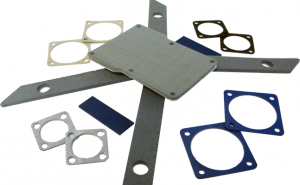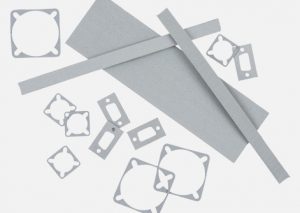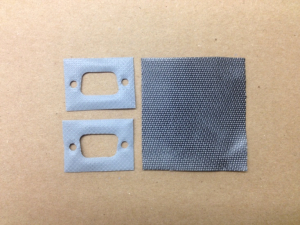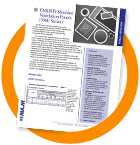Conductive rubber may be one of your most valuable assets when engineering for civilian or military projects. It can help you achieve both EMI shielding and environmental protection of your application to required specifications. It can also be cut or shaped to your needs, making it very versatile. Conductive rubber could be one of those go-to products during engineering, provided you know a few use-specific properties.
![]() Conductive Rubber - A Primer
Conductive Rubber - A Primer
Conductive rubber is the big umbrella or generic term for conductive elastomer or any rubber-like materials designed to help squelch EMI/RFI noise. It protects the function of your application or, in some cases, other sensitive electronics in close proximity.
Because of its rubber-like substrate, it is often used around openings and viewing screens, sealing the interior from dust or water. It can act as a seal around panels, antennas, drains, or just about any place where environmental protection is needed. At the same time, because EMI/RFI attenuation is required, this flexible conductive particle filled elastomer offers very high shielding levels over a wide bandwidth.
But that is largely where the similarities end between the different types of conductive rubbers. The other three considerations have to do with the type of metals in contact with the conductive rubber, the level of EMI/RFI shielding required, and the ingress protection (IP) needed. The first is to avoid galvanic corrosion. The second depends on the application and EMI/RFI specifications required; military, civilian, aerospace, telecommunications - they are likely to all be different. The third, IP, requires a bit of explanation.
Ingress Protection (IP) Explained
IP requirements are posted in two numbers. You may see “IP33” or “IP66”. The first number will be 0 through 6. This has to do with the required restriction of solid objects. For example, a “0” means “no restriction”, whereas a “6” means “totally protected against dust”. The second number has to due with liquids and is designated with 0 through 8. A “2” means protection is required from water dripped at an angle up to 15 degrees from vertical, like light rain. (Yes, they get pretty specific.) A “6” means protection from a powerful jets of water, while an “8” means completely waterproof in a submerged 3 meter setting. The most often used requirement for electronics is IP67, meaning dust proof and able to be submerged in water for 30 minutes.
All of these things will determine the type of conductive rubber you’ll want to use. For assistance in selection, you can use our free interactive Product Guide: Environmental Considerations for EMI Shielding. Once selected you can then get into cuts and shapes. But first, let’s talk about the three most common types: Conductive Elastomer, Multicon and Radthin.
Common Environmental Specification for Conductive Rubber

Conductive elastomer’s base is made up of silicone or fluorosilicone compounds. It inherently provides conductivity by the addition of millions of conductive metal particles in the uncured elastomer base that all contact each other when the elastomer is cured at a specific temperature and pressure. Conductive elastomer is highly flexible in its applications because it can be cut or shaped or molded into almost any shape, including the ability to form it into various profiles in numerous heights, such as a “D”, “P”, rectangle, square, etc…to form a seal around hatches, panels, or man doors. Conductive elastomer exhibits a wide temperature range which lends itself to military applications.

Multicon is silicone impregnated with wires to provide a conductive path. It comes in multiple thicknesses and durometers and can be flash cut or die cut. Wires are usually monel or aluminum while the substrate itself can be sponge-like or solid silicon. But the unique thing about it is that when it is applied under pressure thousands of wires are exposed, making the necessary electrical contact. Because it can provide a superior environmental seal and EMI/RFI shielding up to 6 GHz due to the spacing between wires, it is the most widely used conductive rubber on the market. This material also has a high temperature range.

Radthin is a 24 mesh aluminum cloth impregnated with silicone or neoprene. Because it can be made in very thin sheets while retaining durability and flexibility it is often used as a gasket material but can be die cut for many applications. It also withstands extreme temperatures.
Conductive Rubber as Your Solution
As stated, conductive rubber in one of its many forms and shapes could be your best friend for environmental sealing and EMI/RFI shielding. It’s flexibility in application, offers multiple levels of electromagnetic attenuation and can be customized for just about any situation. MAJR Products provides a wide variety of conductive rubber gaskets and seals. Talk to our engineers about your specific application and we’ll design the perfect solution. Call us at (877) 625-6033 or email sales@MAJR.com.

